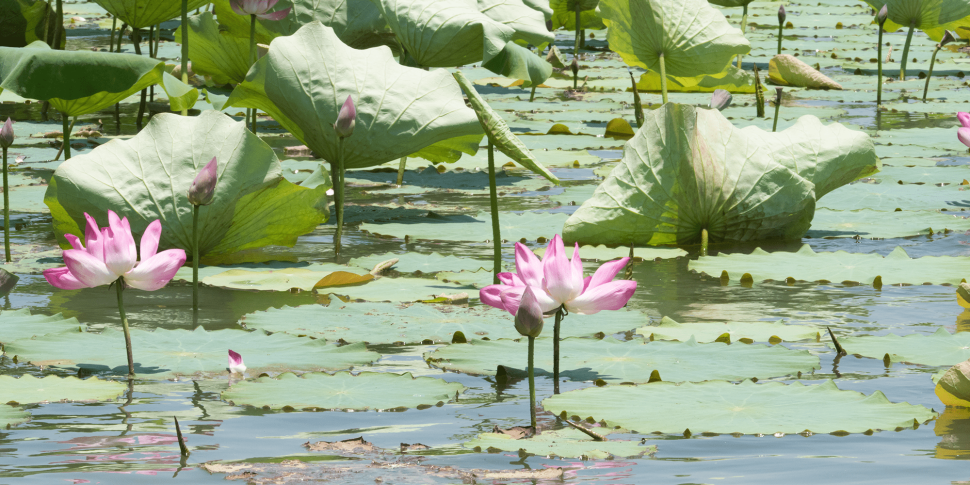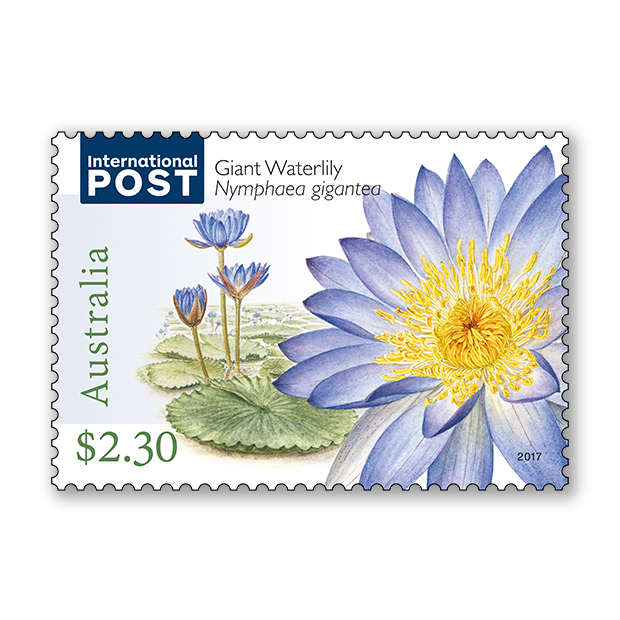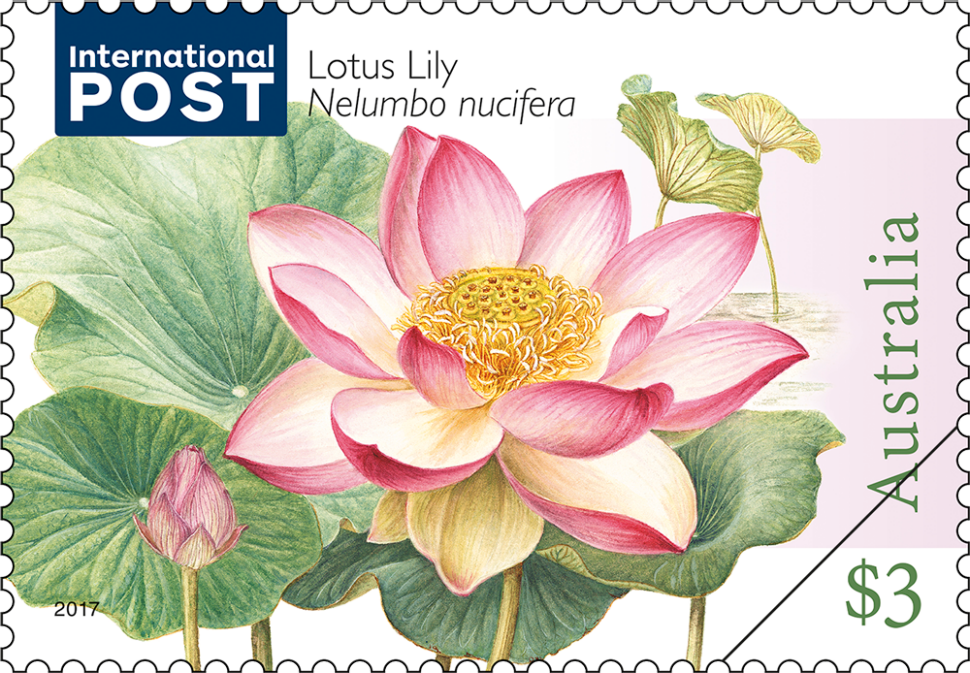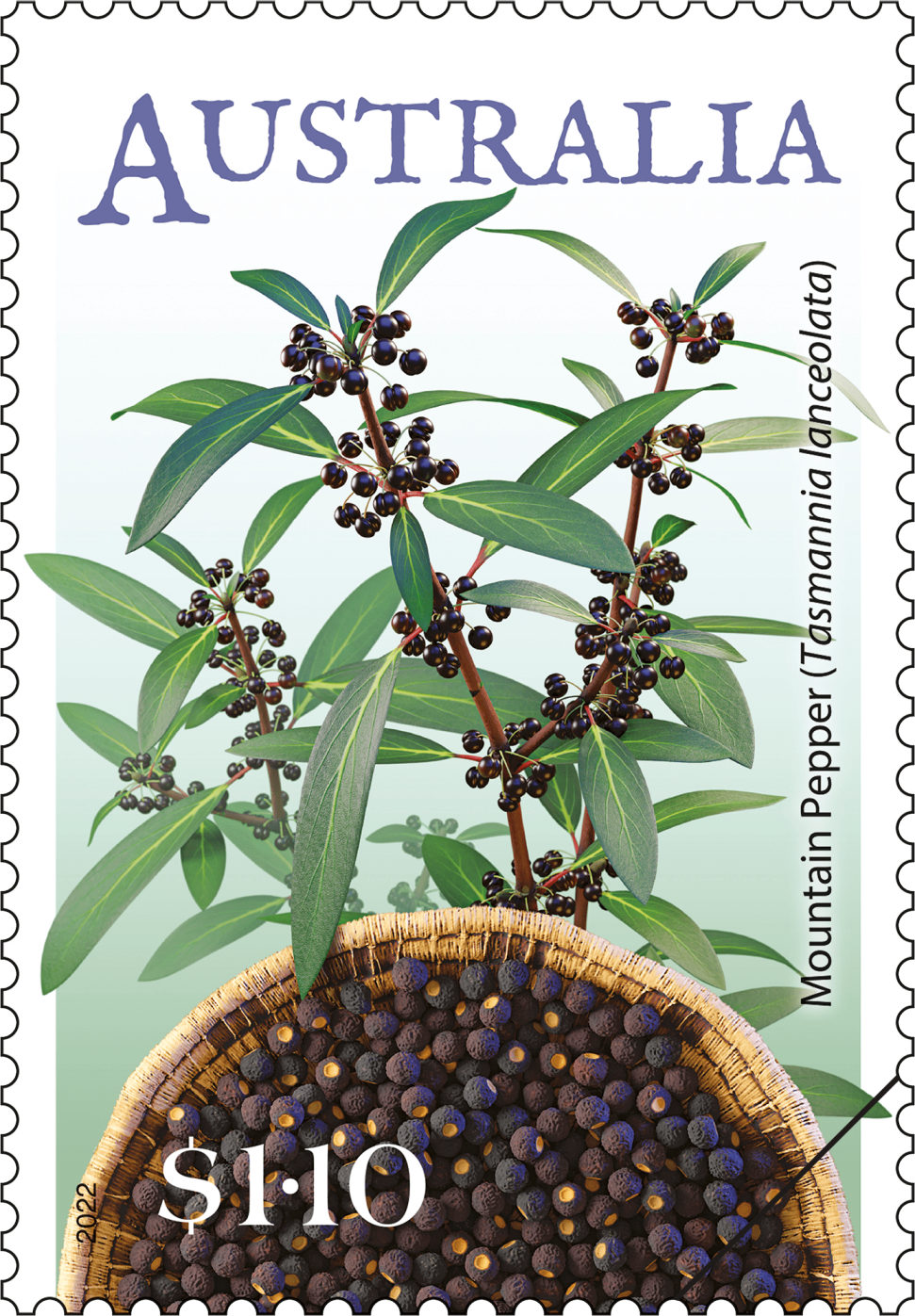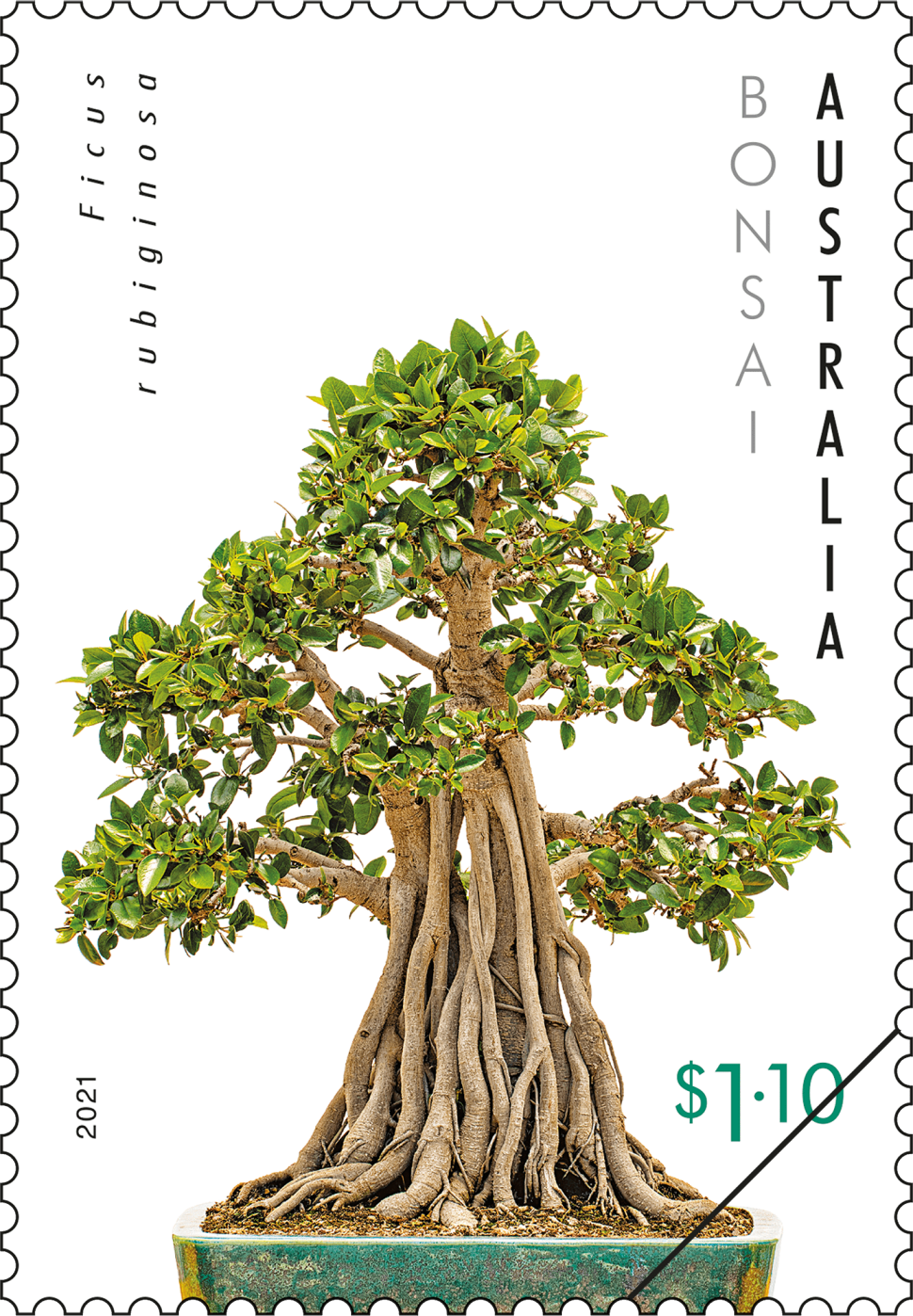Aquatic plants are generally categorised into three groups based on the way they grow, i.e. whether they are submerged, floating or emergent. Various semi-aquatic species also exist, as well as many herbs, shrubs and other plants that enjoy damp conditions. Australian aquatic and wetland plants are not part of a single group; they actually span many botanical families.
This international stamp issue is being issued as part of the international rate rise, coming into effect on 2 October 2017.
Designer
The Water Plants international stamp issue showcases three attractive flowering water plant species that are native to Australia. The stamp illustrations, by renowned botanical illustrator and artist Jenny Phillips, present each species in-situ and also showcase the botanical detail and beauty of each flower.
Products released in this issue
- First day cover (blank, gummed)
- Sheetlets of 5 (self-adhesive)
- Maxicards
Technical specifications
- Issue date
- 27 September 2017
- Issue withdrawal date
- tba
- Denominations
- 1 x $2.10, 1 x $2.30, 1 x $3
- Stamp design
- Jenny Phillips
- Product design
- Jo Mure
- Printer
- RA Printing
- Paper - gummed
- Tullis Russell Red Phosphor/Blue PVA
- Printer - self-adhesive
- EGO
- Paper - self-adhesive
- Securepost MC90/ C-Print 100/ P10P
- Printing process
- Offset lithography
- Stamp size
- 37.5mm x 26mm
- Perforations
- 13.86 x 14.6
- Sheet layout
- Module of 50
- FDI postmark
- Lilydale VIC 3140
- FDI withdrawal date
- 25 October 2017
Entire Marshwort (Nymphoides geminata) grows in still and slow-flowing pools, usually less than one metre deep, in New South Wales, Queensland, Victoria and South Australia. Entire Marshwort has leaves that are unscalloped, or “entire”, as well as delicate fringing on each of its five small, bright yellow petals and around the centre of the flower (it does not have a fringed central keel, however, which is what differentiates it from similar species.) Its flowers grow to around three centimetres in diameter and emerge above the water’s surface on long stalks that grow in pairs.
The striking large blue-white flowers of the Giant Waterlily (Nymphaea gigantea) grow up to 25 to 30 centimetres in diameter. They are held some 50 centimetres above both the water’s surface and its enormous toothed, floating leaves. The Giant Waterlily’s natural distribution is south-east Queensland and north-east New South Wales, though very similar species previously known as gigantea are found in the Northern Territory and Western Australia. In Indigenous culture, every part of the plant is considered edible.
Lotus Lily (Nelumbo nucifera) typically grows in the shallow tropical wetlands of Queensland and the Northern Territory, though it is also native to Asia where it is referred to as Sacred Lotus. Its large pink flowers, of around 20 centimetres in diameter, appear on stiff stems held above big, rounded leaves.
The fragrant flower of the Lotus Lily blooms for around three days, opening in the morning and closing again at night. Every part of the lotus plant can be eaten and the flowers are thermogenic. The Lotus Lily isn’t actually a water lily at all; it is part of the Nelumbonaceae family, which comprises only two species: Nelumbo nucifera and Nelumbo lutea. The most noticeable difference between the lotus and the water lily is the growing position of their leaves: lotus leaves are emergent and water lily leaves float on the water’s surface.
This content was produced at the time of the stamp issue release date and will not be updated.
